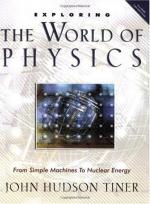|
This section contains 1,022 words (approx. 4 pages at 300 words per page) |

|
Nuclear energy is produced during reactions in the nucleus of an atom. Atoms can be thought of as miniature solar systems with the nucleus at the center like a sun and electrons orbiting around it like planets. Densely packed neutrons and protons make up the nucleus, which is held together with great force, the "strongest force in nature." When the nucleus is bombarded with a neutron, it can be split apart, a process called fission. Uranium is the heaviest natural element and has ninety-two protons. Because uranium atoms are so large, the atomic force that binds it together is relatively weak, so fission is more likely with uranium than other elements.
Fusion, another type of nuclear reaction, is the joining of atoms and can occur with elements of low atomic number, such as hydrogen, the lightest element, which has one proton. The first time physicists achieved...
|
This section contains 1,022 words (approx. 4 pages at 300 words per page) |

|


